 January 11, 2018 John E. Ross, KD8IDJ, Editor
| |||||||||||||||||||||||
"Quantum Radio" May Offer New Twist on Communicating in Problematic Environments Researchers at the National Institute of Standards and Technology (NIST) have demonstrated that quantum physics might enable communication and mapping in locations where GPS, cell phones, and radio are not reliable or don't work at all, such as indoors, in urban canyons, underwater, and underground. NIST announced the technology advance on January 2. The technology may have marine, military, and surveying applications. The NIST team is experimenting with very-low-frequency (VLF) digitally modulated magnetic signals, which propagate farther through buildings, water, and soil than conventional electromagnetic signals at higher frequencies.
"The best magnetic field sensitivity is obtained using quantum sensors. The increased sensitivity leads in principle to better range. The quantum approach also offers the possibility to get high-bandwidth communications like a cellphone has. We need bandwidth to communicate with audio underwater and in other forbidding environments," he said. NIST researchers have demonstrated detection of digitally modulated magnetic signals by a magnetic-field sensor that relies on the quantum properties of rubidium atoms. The NIST technique varies magnetic fields to modulate or control the frequency -- specifically, the horizontal and vertical positions of the signal's waveform -- produced by the atoms.
NIST developed a direct current magnetometer that uses polarized light as a detector to measure the "spin" of rubidium atoms in a tiny glass cell induced by magnetic fields. Changes in the atoms' spin rate correspond to an oscillation in the dc magnetic fields, creating alternating current voltages at the light detector that are more useful for communications. "Atoms offer very fast response plus very high sensitivity," Howe said. "Classical communications involves a tradeoff between bandwidth and sensitivity. We can now get both with quantum sensors," Howe speculated on an Amateur Radio application. "The quantum radio is great fun, far better sensitivity than any other receiver, at room temperature, anyway," Howe told ARRL. "The atoms in the gas cell replace the 'antenna' and detection in the classical sense. It would be nice to try modulation in the 2200-meter band using the quantum receiver for detection." In the future, the NIST team plans to develop improved transmitters.
The researchers hope to extend the range of low-frequency magnetic field signals by boosting the sensor sensitivity, suppressing noise more effectively, and increasing and efficiently using the sensor's bandwidth. The NIST strategy requires inventing an entirely new field, which combines quantum physics and low-frequency magnetic radio, said Howe, who told ARRL that ham radio enhanced his interest in communications when he was in ninth grade in New Mexico. "So, it's what guided my interest into applied quantum physics in college. Ham radio was the bigger influence in all ways." Howe retired from NIST last September. He now is a research advisor for NIST and Colorado University. Fox-1D Satellite Set to Launch this Week, China to Launch Five New CubeSats The launch from India of AMSAT-NA's Fox-1D CubeSat will take place on January 12 (UTC). The Polar Satellite Launch Vehicle (PSLV) flight had to be rescheduled from December 30. AMSAT Vice President Engineering Jerry Buxton, N0JY, delivered Fox-1D to Spaceflight Inc. in Seattle last November for integration.
The PSLV also will carry the French PicSat, which carries an Amateur Radio V/U FM transponder. PicSat will perform space observations. The transponder uplink is 145.910 MHz, the downlink is 435.525 MHz. Some 30 smaller secondary payloads from India, the US, and other international entities will also be on the launch, AMSAT News Service has reported. AMSAT will release Fox-1D's Keplerian elements on its website as soon as they are known and seeks telemetry data on the CubeSat to assist with commissioning. "Participation in telemetry collection by as many stations in as many parts of the world as possible is essential as AMSAT Engineering looks for successful startup and indications of the general health and function of the satellite as it begins to acclimate to space," AMSAT said over the weekend. AMSAT said the on-orbit checkout procedure could be completed in a few days. AMSAT asks the Amateur Satellite community to refrain from using the transponder uplink while on-orbit testing is under way. Chinese CubeSats Set to Launch
Thomas Fire Response Also Demonstrates Amateur Radio's Social Media Value Santa Barbara Amateur Radio Club (SBARC) members kept a close watch on the Thomas Fire after it broke out in early December. Using a variety of the club's analog and digital Amateur Radio assets, radio operators were able to observe fire-fighting efforts first hand and pass along immediate information, often before it was reported by official sources or by local news media. SBARC operates five communication sites in Santa Barbara County, including sites on Diablo Peak on the mostly uninhabited Santa Cruz Island, and on Santa Ynez Peak.
Starting in mid-December, a round-the-clock emergency net convened on 2 meters, as commercial power for much of Santa Barbara County was cut and the fire descended on residential communities in Santa Barbara County, prompting multiple evacuation orders. With repeaters on generator power and many operators running on battery power, net traffic consisted of official information, including evacuation orders, live reports on the rapidly approaching fire line from operators who remained inside the mandatory evacuation area, related traffic about firefighting efforts, and wind and weather conditions. SBARC volunteers set up an ad hoc remote receiving station to stream live fire ground and air communications audio over the internet and mesh network.
As fire crews came off duty, one firefighter and Amateur Radio operator joined the net to offer a firsthand account of operations from an insider's perspective. SBARC members also assisted visiting fire crew members with mobile radio antenna repairs in the field. Maaia said social media proved to be a valuable communication asset, as most official organizations, such as incident command and emergency management agencies, were disseminating official information via Twitter immediately upon release. "Amateur stations without power, cell phone or internet access could be kept informed of important information including evacuation orders, via the Amateur Radio net," Maaia explained. "SBARC also served as an aggregator for Thomas Fire-related information by featuring tweets on the club website."
The largest in modern California history, the Thomas Fire caused devastating losses in Ventura and Santa Barbara counties. "Although the Santa Barbara ARES group never activated, Amateur Radio proved to be a valuable mode of communication, especially when coupled with social media, amateur mesh networking, IRC chat (over mesh and internet) and live audio streaming," Maaia said. In Ventura County, the Thomas Fire damaged or destroyed some Amateur Radio resources normally available to provide emergency communication. It was an Amateur Radio TV camera that caught the first images of the Thomas Fire on December 4. A fundraising effort now is under way to help a repeater system operator to replace gear and to bolster the rest of the system for future such emergencies. Fundraising sparkplug Ben Kuo, AI6YR, said the fire demonstrated the difficulty of keeping equipment running in remote locations during fire emergencies.
"We also discovered other sites faced serious limitations after utility power was cut and solar panels were obscured by vast clouds of smoke," Kuo recounted in his solicitation. "This GoFundMe [campaign] will go toward enhancing the existing ham radio repeater network, to make it more reliable in emergencies." High-quality video cameras for those repeater sites is another possibility. During the Thomas Fire, Kuo helped bridge the divide between Amateur Radio and social media, and even firefighters would check his feed to see what was going on in other areas of the fire, he said. "It's a very powerful combination," Kuo told VC Star. An ARRL member, Kuo, of Newbury Park, founded the socaltech news site. He's been licensed for 3 years and serves as an ARRL Technical Specialist for the ARRL Santa Barbara Section. Radio Amateurs Track Major East Coast Winter Storm WX1BOX, the Amateur Radio Station at the National Weather Service (NWS) office in Taunton, Massachusetts, joined numerous SKYWARN nets across New England in activating for an early-January nor'easter that brought significant coastal flooding, damaging winds -- with hurricane-force wind gusts downing trees and power lines -- and heavy snow accumulations to the region. The eastern coast of New England experienced high snowfall rates, whiteout conditions, and even "thunder snow." A dramatic drop in barometric pressure generated a so-called "bomb cyclone."
WX1BOX was active for 16.5 hours, supporting data gathering for the NWS. Local and state emergency managers, broadcast media, and other agencies also used these reports for situational awareness during the storm and to assess the need for any later recovery efforts. "A widespread 8 to 18 inches of snow fell across southern New England away from Cape Cod and the Islands. There were reports of thunderstorms with snowfall rates in the 2 to 3 inches per hour range," said Rob Macedo, KD1CY, Eastern Massachusetts Assistant Section Emergency Coordinator and NWS Taunton SKYWARN liaison. "Wind gusts between 70 and 76 MPH were recorded over Cape Cod and the Islands, and wind gusts in the 40-70 MPH range were common across the rest of southern New England." Macedo said the severe and widespread coastal flooding in some eastern Massachusetts locations was at the higher end of coastal flood events experienced in the last 10 years or so. WX1BOX posted a report, with details on snowfall amounts, winds, coastal flooding, wind damage, and photos and videos from the storm on its Facebook page.
The Peabody Emergency Operations Center (EOC) was active on the Massachusetts North Shore, and the EOC served as a net control point for SKYWARN nets in the North Shore area. Coastal flooding reports from the North Shore and surrounding areas and snowfall totals were relayed to WX1BOX and other agencies from their nets. Staffing the EOC station were North Shore ARES DEC Jim Palmer, KB1KQW; Matt Knowles, KC1AEI, and Dave Pais, N1VSI.
At the Eastern Massachusetts ARES section level, ARES went on standby for any agency needs or to support any local ARES activations by Eastern Massachusetts ARES SEC Marek Kozubal, KB1NCG. Local nets were active on approximately 10 different repeaters across the NWS Taunton coverage area. The New England Echolink/IRLP reflector system was also active, with reporting stations from across New England, supplemented by a tie-in to the conference node typically used by the VoIP Hurricane Net. An offer of assistance came from members of Illinois SKYWARN, including a team member who handles SKYWARN for WX9LOT, the Amateur Radio station at the NWS Chicago/Romeoville office. Debby Gray, WX9VOR, and Joe Perry, K9JPP, assisted by monitoring Echolink and supported data entry of snowfall reports from the region. "This demonstrated a 'virtual EOC' approach to storm monitoring utilizing out-of-area resources to support a storm incident with local personnel providing local perspective," Macedo said. Operators at WX1GYX, the Amateur Radio station at the Gray, Maine, NWS Office, were active all day on January 4, gathering reports from various sources via 2-meter FM, DMR, and HF. Tim Watson, KB1HNZ, and Eric Emery, KC1HJK, handled net control duties, with support from Waylon McDonald, KC1HJN, and members of Mt. Washington Valley ARES. -- Thanks to Rob Macedo, KD1CY, and Tim Watson, KB1HNZ The Doctor Will See You Now! "Keeping Cool -- The Importance of Maintaining Proper Equipment Temperature" is the topic of the latest (January 4) episode of the "ARRL The Doctor is In" podcast. Listen...and learn!
Every 2 weeks, your host, QST Editor-in-Chief Steve Ford, WB8IMY, and the Doctor himself, Joel Hallas, W1ZR, will discuss a broad range of technical topics. You can also e-mail your questions to [email protected], and the Doctor may answer them in a future podcast. Enjoy "ARRL The Doctor is In" on Apple iTunes, or by using your iPhone or iPad podcast app (just search for "ARRL The Doctor is In"). You can also listen online at Blubrry, or at Stitcher (free registration required, or browse the site as a guest) and through the free Stitcher app for iOS, Kindle, or Android devices. If you've never listened to a podcast before, download our beginner's guide. The 2018 ARRL Repeater Directory -- Complete, Comprehensive, and Now Available The ARRL Repeater Directory® -- 2018 edition is now available! For decades, The ARRL Repeater Directory has been an invaluable source for locating repeater frequencies while traveling. New hams often use the Repeater Directory to find local activity after purchasing a new handheld radio. Public service volunteers often keep a copy nearby or in their emergency "go kits."
Repeater systems are listed by state/province, city, and operating mode. Digital repeater systems are included: FUSION, D-STAR, DMR, NXDN, and P25 systems. The Directory is a convenient 6 × 9 inches and sports a lay-flat spiral binding. Make it yours! The cover of the new 2018 edition includes space to personalize your directory. Pages of supplemental information include VHF/UHF and microwave band plans, as well as repeater operating practices. The 2018 ARRL Repeater Directory is now shipping. Order from the ARRL Store, or find an ARRL publication dealer; ARRL Item No. 0758, ISBN: 978-1-62595-075-8, $19.95 retail; ARRL member price $17.95. For additional questions or ordering, call 860-594-0355 (toll-free in the US, 888-277-5289). DXpedition Leader, Contester, Mentor David Collingham, K3LP, SK Well-known DXpedition leader and contester David Collingham, K3LP, of Mt. Airy, Maryland, died on January 6 after falling through the ice on a pond near his home the previous evening while trying to rescue his stranded dog. An ARRL member, he was 59. Collingham was co-leader, with Paul Ewing, N6PSE, of the 2016 VP8STI/VP8SGI DXpedition to South Sandwich and South Georgia Islands, and he was president of the Intrepid-DX Group. According to news accounts, Collingham had alerted his family that his golden retriever had fallen through the ice, but by the time they and rescuers arrived on the scene, Collingham had already slipped beneath the ice.
Professionally, Collingham was president and CEO of International Quality Registrars Corporation, a global ISO 9001 certification firm. NCJ Editor Scott Wright, K0MD, recalled hearing Collingham speak at a Dayton DX Dinner. "He challenged those in attendance to always think of others, especially DXers who are generally less fortunate," Wright recounted. Collingham also challenged those in attendance to help school clubs and start one, and to realize that ham radio would die, were a new generation not mentored and fostered, Wright said. "David lived his life bold, courageous, and heroically, and he died trying to save his beloved dog," Ewing wrote in announcing Collingham's death. "He will always be a hero in our hearts." In Brief...
The K7RA Solar Update Tad Cook, K7RA, Seattle, reports: The average daily sunspot number over the January 4-10 reportingweek was 11.9, compared to zero (no sunspots) over the previous 7 days, but the average daily solar flux declined slightly, from 70.4 to 69.9. The average daily planetary A index went from 5.1 to 5.4, and average mid-latitude A index changed from 3.4 to 4.6.
The predicted planetary A index is 5 on January 11-12; 14, 10, and 6 on January 13-15; 5 on January 16-19; 12, 10, 8, and 6 on January 20-23; 5 on January 24-27; 10 on January 28; 5 on January 29-February 3; 12, 8, 5, and 8 on February 4-7; 5 on February 8-9; 10, 15, and 10 on February 10-12; 5 on February 13-15; 12, 10, 8, and 6 on February 16-19; 5 on February 20-23, and 10 on February 24. Sunspot numbers for January 4-10 were 13, 11, 11, 11, 13, 13, and 11, with a mean of 0. The 10.7-centimeter flux was 69.5, 69.3, 69.4, 69.9, 70.3, 70.8, and 70.4, with a mean of 69.9. Estimated planetary A indices were 4, 5, 3, 3, 9, 9, and 5, with a mean of 5.4. Estimated mid-latitude A indices were 3, 5, 2, 2, 9, 7, and 4, with a mean of 4.6. Send me your reports and observations. Getting It Right In the article "Alabama Governor Kay Ivey Makes Ham Radio Debut with State's Bicentennial Call Sign," which appeared in the January 4 edition of The ARRL Letter, we got the capital of Alabama incorrect. It is Montgomery. Just Ahead in Radiosport
See the ARRL Contest Calendar for more information. For in-depth reporting on Amateur Radio contesting, subscribe to The ARRL Contest Update via your ARRL member profile e-mail preferences. Upcoming ARRL Section, State, and Division Conventions
Find conventions and hamfests in your area.
. .
Subscribe to...
Free of charge to ARRL members...
| |||||||||||||||||||||||
.JPG) "The big issues with very-low-frequency communications, including magnetic radio, are poor receiver sensitivity and extremely limited bandwidth of existing transmitters and receivers. This means the data rate is zilch," said NIST project leader Dave Howe, AD0MR.
"The big issues with very-low-frequency communications, including magnetic radio, are poor receiver sensitivity and extremely limited bandwidth of existing transmitters and receivers. This means the data rate is zilch," said NIST project leader Dave Howe, AD0MR.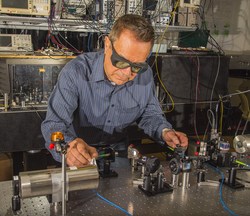
.jpg)
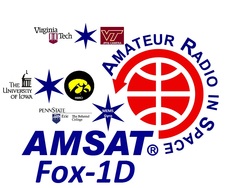 In addition to a Fox-1 U/V FM transponder, Fox-1D will carry several university experiments, including a MEMS gyro from Pennsylvania State University-Erie, a camera from Virginia Tech, and the University of Iowa's High Energy Radiation CubeSat Instrument (HERCI) radiation mapping experiment. Fox-1D also carries the AMSAT "L-Band Downshifter," which gives the option of utilizing a 1.2 GHz uplink for the FM transponder. The Fox-1D downlink will be on 145.880 MHz, and uplinks will be on 435.350 and 1267.350 MHz (67 Hz CTCSS), switchable.
In addition to a Fox-1 U/V FM transponder, Fox-1D will carry several university experiments, including a MEMS gyro from Pennsylvania State University-Erie, a camera from Virginia Tech, and the University of Iowa's High Energy Radiation CubeSat Instrument (HERCI) radiation mapping experiment. Fox-1D also carries the AMSAT "L-Band Downshifter," which gives the option of utilizing a 1.2 GHz uplink for the FM transponder. The Fox-1D downlink will be on 145.880 MHz, and uplinks will be on 435.350 and 1267.350 MHz (67 Hz CTCSS), switchable..jpg) Meanwhile, AMSAT-UK reports that China will launch Hunan Amateur Radio Society's constellation of five similar 6U CubeSat spacecraft on January 17 from its Jiuquan Space Center. Identified as TY-2 through TY-6, the satellites will carry out ionospheric transmission-detection experiments, in addition to Amateur Radio HF/VHF/UHF re-transmitting experiments in any narrow-band mode. The constellation will also carry out inter-satellite communication experiments that include Amateur Radio loads, Li-Fi high-speed LED digital downlink, and CW lamp signal communication experiments. Downlinks are on 70 centimeters using 9.6 kbps GMSK and on 2.4 GHz and 5.8 GHz using 5 Mbps OFDM.
Meanwhile, AMSAT-UK reports that China will launch Hunan Amateur Radio Society's constellation of five similar 6U CubeSat spacecraft on January 17 from its Jiuquan Space Center. Identified as TY-2 through TY-6, the satellites will carry out ionospheric transmission-detection experiments, in addition to Amateur Radio HF/VHF/UHF re-transmitting experiments in any narrow-band mode. The constellation will also carry out inter-satellite communication experiments that include Amateur Radio loads, Li-Fi high-speed LED digital downlink, and CW lamp signal communication experiments. Downlinks are on 70 centimeters using 9.6 kbps GMSK and on 2.4 GHz and 5.8 GHz using 5 Mbps OFDM.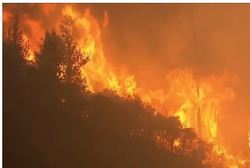 "These two sites host [Automatic Dependent Surveillance-Broadcast] ADS-B receivers that are connected via a combination of amateur microwave IP links and mesh networking and were used to track and monitor airborne firefighting activities," Levi Maaia, K6LCM, co-chair of SBARC's Telecommunications Services Committee, told ARRL.
"These two sites host [Automatic Dependent Surveillance-Broadcast] ADS-B receivers that are connected via a combination of amateur microwave IP links and mesh networking and were used to track and monitor airborne firefighting activities," Levi Maaia, K6LCM, co-chair of SBARC's Telecommunications Services Committee, told ARRL..JPG)
.jpg)
.jpg)
-Ben-Sipprell-Foto.jpg)
-Adam-Vanyo.jpg) Cape Cod Amateur Radio Emergency Service (ARES) was active at the Barnstable County Mutual Aid Coordination Center (MACC), convening ARES/SKYWARN nets and providing wind damage and coastal flood reports from their region. For the most part, Cape Cod and the Islands received rain, which was followed by a period of snow as temperatures dropped. The resulting "flash freeze" conditions led to dangerously icy roadways. Damaging winds causing scattered power outages and coastal flooding were the biggest problems, with an inch or two of rainfall in the area. Staffing the station was Cape Cod ARES District Emergency Coordinator Frank O'Laughlin, WQ1O, and Tom Wruk, KB1QCQ.
Cape Cod Amateur Radio Emergency Service (ARES) was active at the Barnstable County Mutual Aid Coordination Center (MACC), convening ARES/SKYWARN nets and providing wind damage and coastal flood reports from their region. For the most part, Cape Cod and the Islands received rain, which was followed by a period of snow as temperatures dropped. The resulting "flash freeze" conditions led to dangerously icy roadways. Damaging winds causing scattered power outages and coastal flooding were the biggest problems, with an inch or two of rainfall in the area. Staffing the station was Cape Cod ARES District Emergency Coordinator Frank O'Laughlin, WQ1O, and Tom Wruk, KB1QCQ.--Burton-Balkind-KB1VID-Foto.jpg)
 Sponsored by
Sponsored by 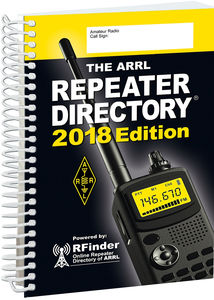 The 2018 edition is the second to include crowdsourced listings contributed by users, repeater owners, and volunteer frequency coordinators. This means more listings, and updated more often. With 31,000 listings, the ARRL Repeater Directory® is the most complete printed directory of on-the-air repeaters, covering repeater systems throughout the US and Canada.
The 2018 edition is the second to include crowdsourced listings contributed by users, repeater owners, and volunteer frequency coordinators. This means more listings, and updated more often. With 31,000 listings, the ARRL Repeater Directory® is the most complete printed directory of on-the-air repeaters, covering repeater systems throughout the US and Canada.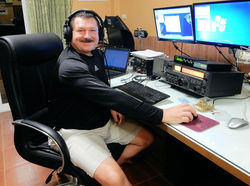 Licensed at age 15 as WN6KTF in his home state of California, Collingham went on to take part in more than 70 DXpeditions and served as leader or co-leader of 14 major DXpeditions. He was a 2014 inductee to the CQ DX Hall of Fame, credited with focusing on using Amateur Radio as an educational tool at home and abroad. With the support of Collingham's long-distance coaching, teacher Bev Matheson, KJ6RSX, a Fontana, California, elementary school teacher, was encouraged to start a ham radio club for fourth and fifth graders at Dorothy Grant Elementary School. A Fontana High School graduate, Collingham provided a complete station for the school. He also promoted and taught Amateur Radio abroad.
Licensed at age 15 as WN6KTF in his home state of California, Collingham went on to take part in more than 70 DXpeditions and served as leader or co-leader of 14 major DXpeditions. He was a 2014 inductee to the CQ DX Hall of Fame, credited with focusing on using Amateur Radio as an educational tool at home and abroad. With the support of Collingham's long-distance coaching, teacher Bev Matheson, KJ6RSX, a Fontana, California, elementary school teacher, was encouraged to start a ham radio club for fourth and fifth graders at Dorothy Grant Elementary School. A Fontana High School graduate, Collingham provided a complete station for the school. He also promoted and taught Amateur Radio abroad. The National Conference of Volunteer Examiner Coordinators (
The National Conference of Volunteer Examiner Coordinators (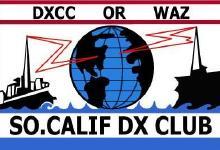 Registration for the 69th annual
Registration for the 69th annual 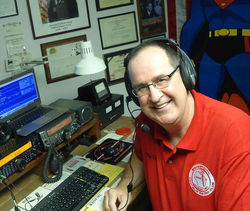 Denny Berg, WB9MSM, of Watertown, Wisconsin, has achieved his goal of completing DXCC using the new FT8 digital mode. It took him just 4 months. "I can tell all of you that this mode is spreading like wildfire throughout all the HF bands," Berg told
Denny Berg, WB9MSM, of Watertown, Wisconsin, has achieved his goal of completing DXCC using the new FT8 digital mode. It took him just 4 months. "I can tell all of you that this mode is spreading like wildfire throughout all the HF bands," Berg told 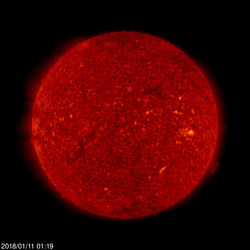 The predicted solar flux is 70 on January 11-13; 69 and 68 on January 14-15; 70 on January 16-21; 72 on January 22-27; 70 on January 28-February 17; 72 on February 18-23, and 70 on February 24.
The predicted solar flux is 70 on January 11-13; 69 and 68 on January 14-15; 70 on January 16-21; 72 on January 22-27; 70 on January 28-February 17; 72 on February 18-23, and 70 on February 24.







